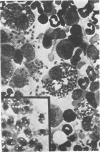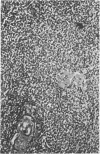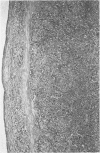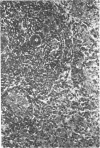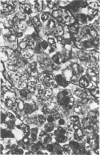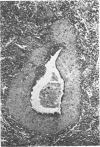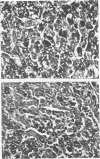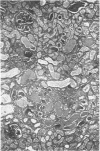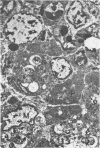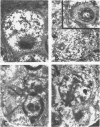Abstract
Visceral leishmaniasis was diagnosed in a dog that had been living with his owners in Spain for two years. Clinical diagnosis was somewhat delayed as the disease is largely unknown to Canada and was manifested by a nonresponsive anemia which was not easily explained on peripheral blood evaluation alone, and concomitant interstitial nephritis. On post mortem examination splenomegaly was the main gross pathological finding. Light microscopic examination of bone marrow aspirates and subsequent electron microscopic examination of splenic and hepatic tissues revealed numerous Leishman-Donovan bodies in cells of the reticuloendothelial system. Parasitized reticuloendothelial cells were seen singly or forming granulomata. These latter did not contain giant cells and were confined mainly to the liver and spleen, being sparse and single in the first but extremely numerous and coalescing in the latter. Accumulation of intrafollicular hyaline material was seen in a small number of splenic follicles. Leishman-Donovan bodies on electron microscopic examination had a trilaminar periplast, a large round nucleus with heavy blocks of marginated chromatin and two nucleoli, a short flagellum and a kinetoplast. Lymph nodes and bone marrow had numerous parasitized macrophages but no granulomata. Leishman-Donovan bodies were not detected in the lungs and kidneys both of which exhibited a chronic intersitital reaction. The comparative hematological profile as well as the importance of bone marrow and electron microscopic examinations of the spleen and liver in diagnosis are discussed. The potential public health hazard of leishmaniasis to North America and particularly to Canada is considered.
Full text
PDF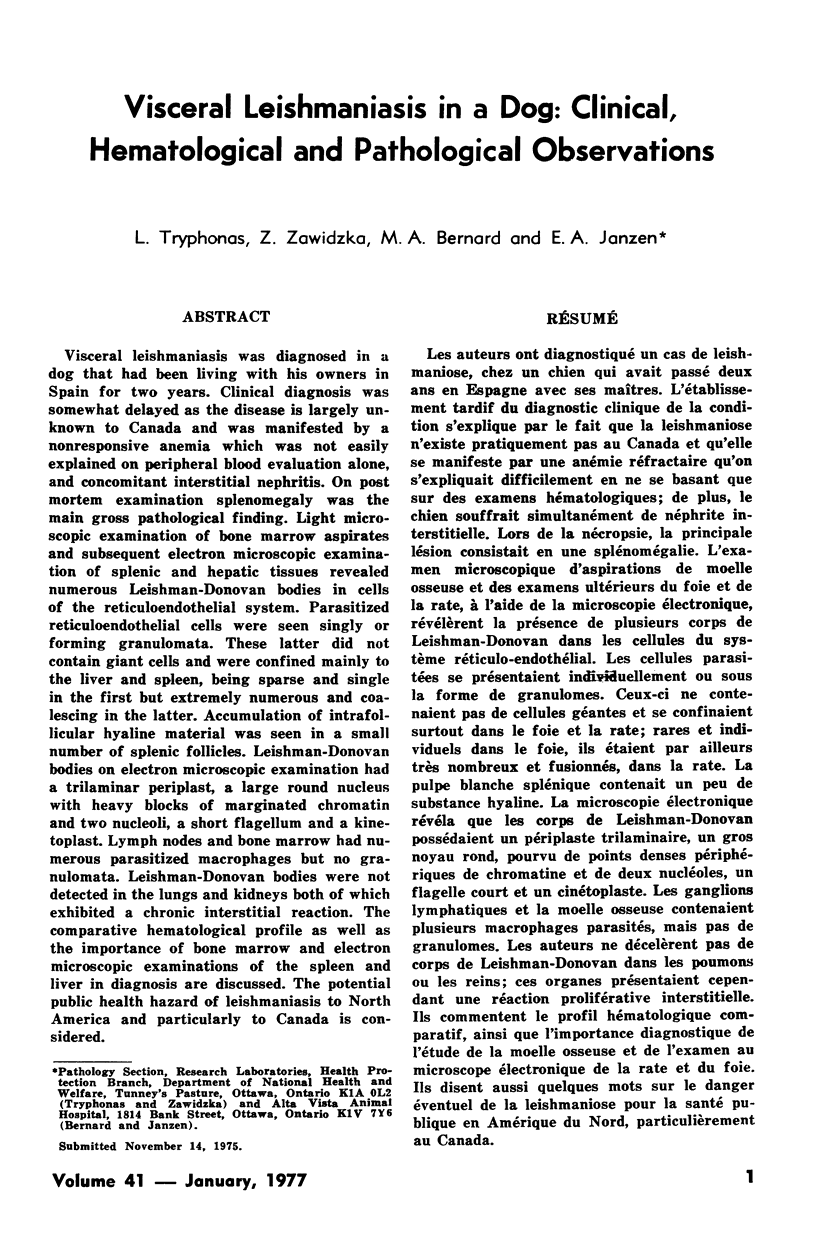
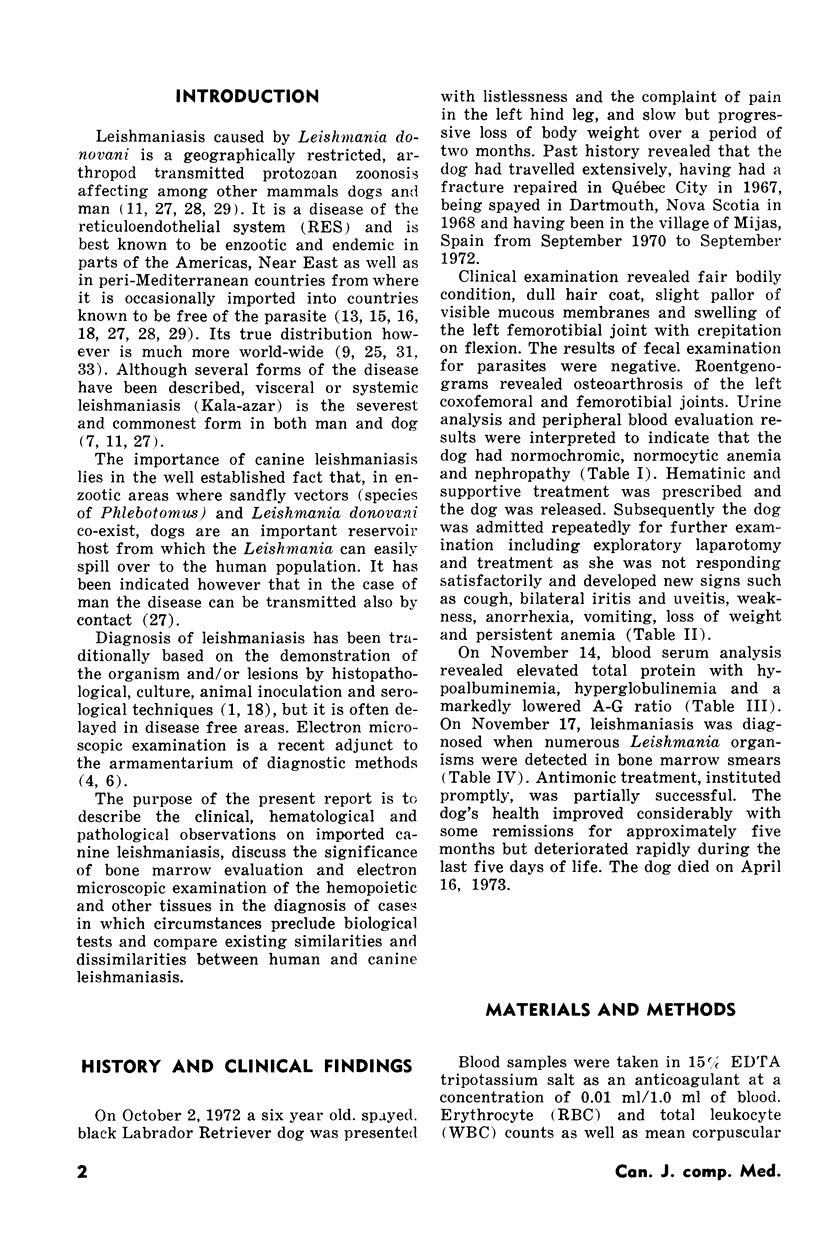
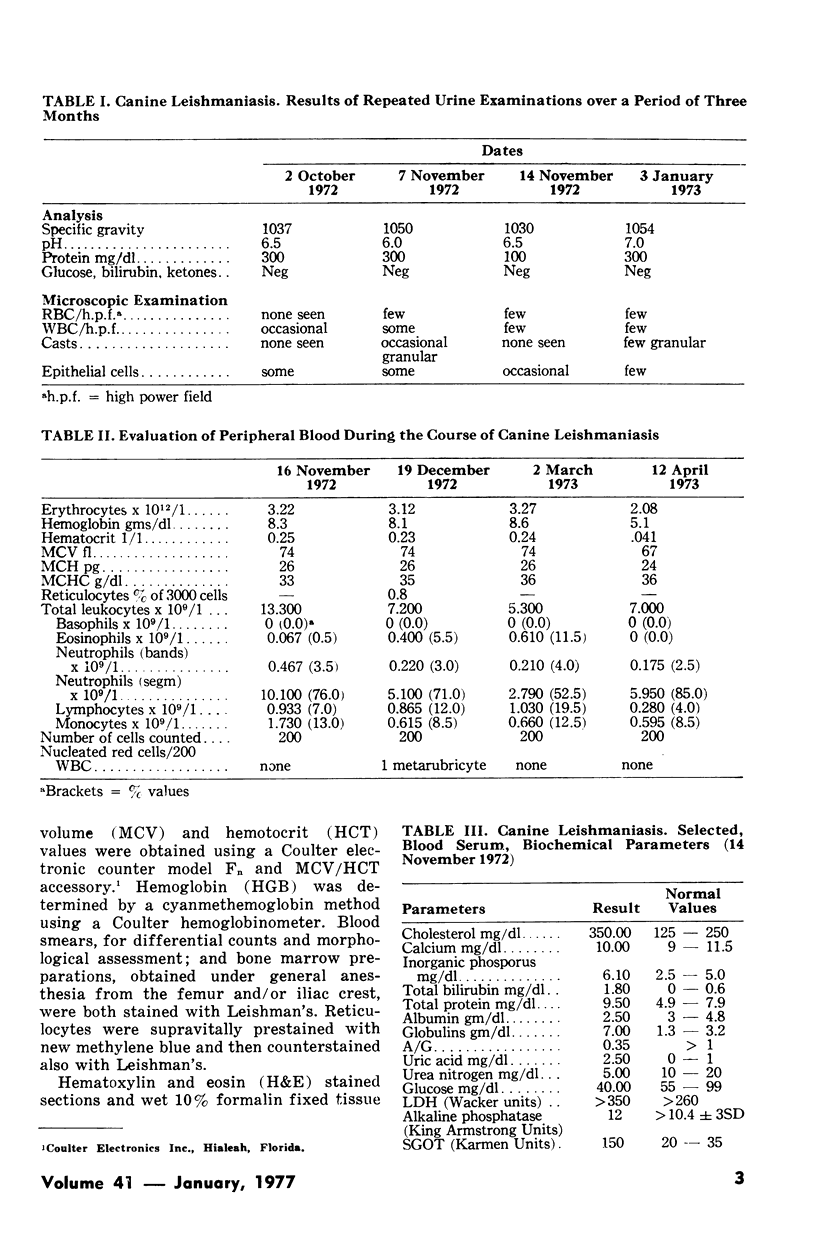
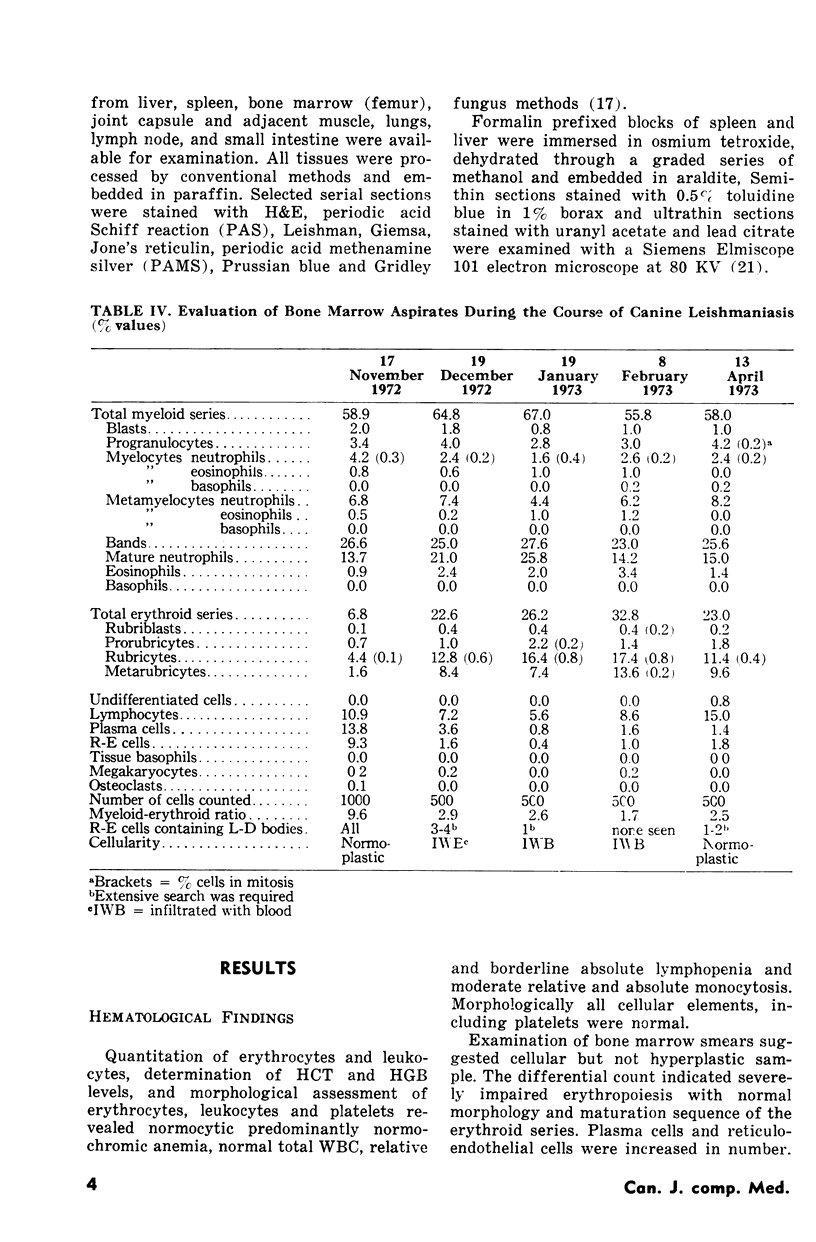
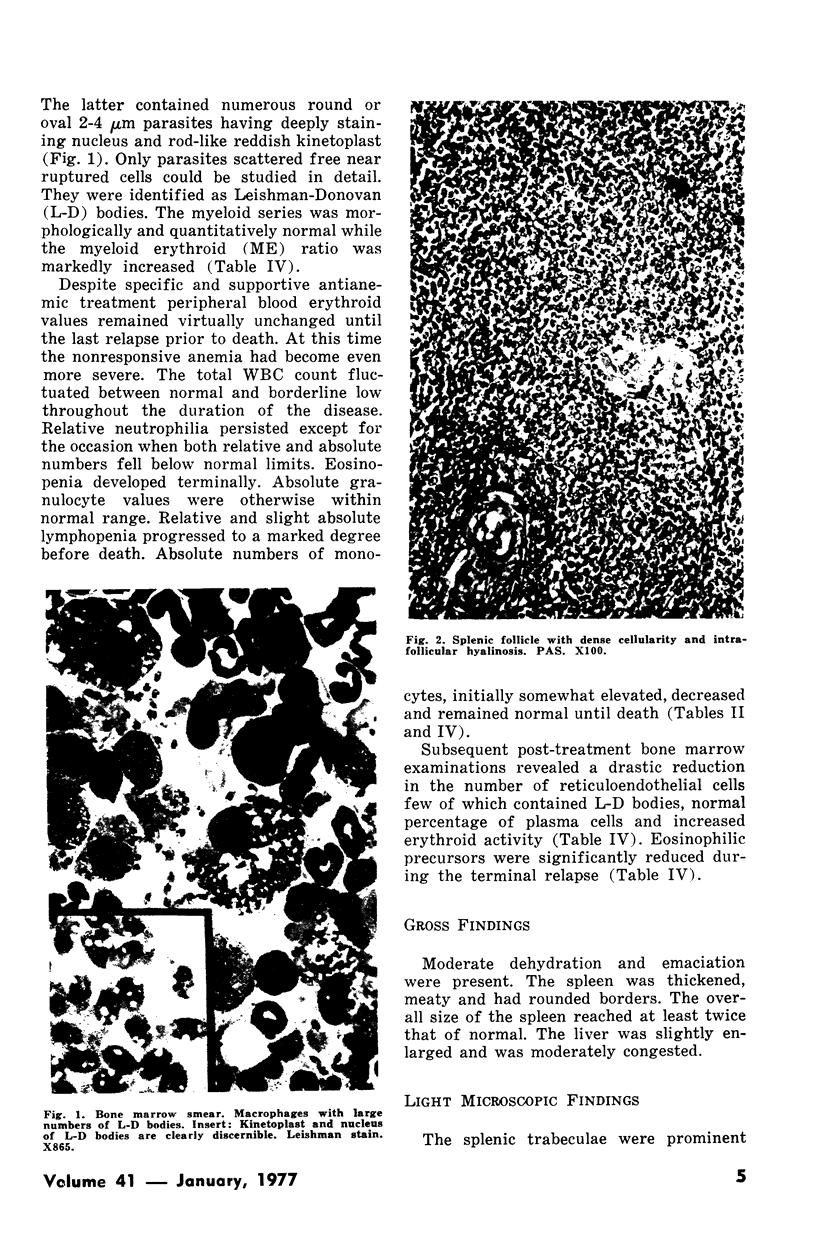

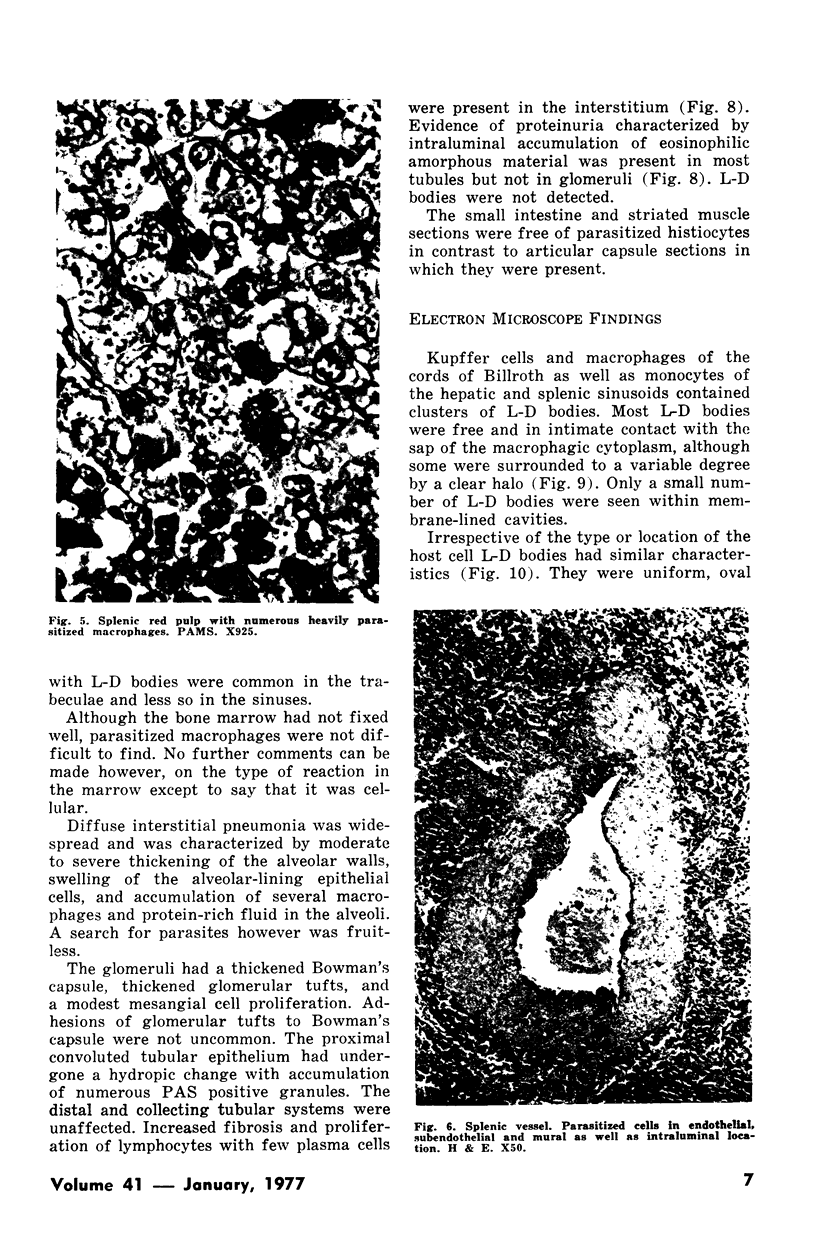
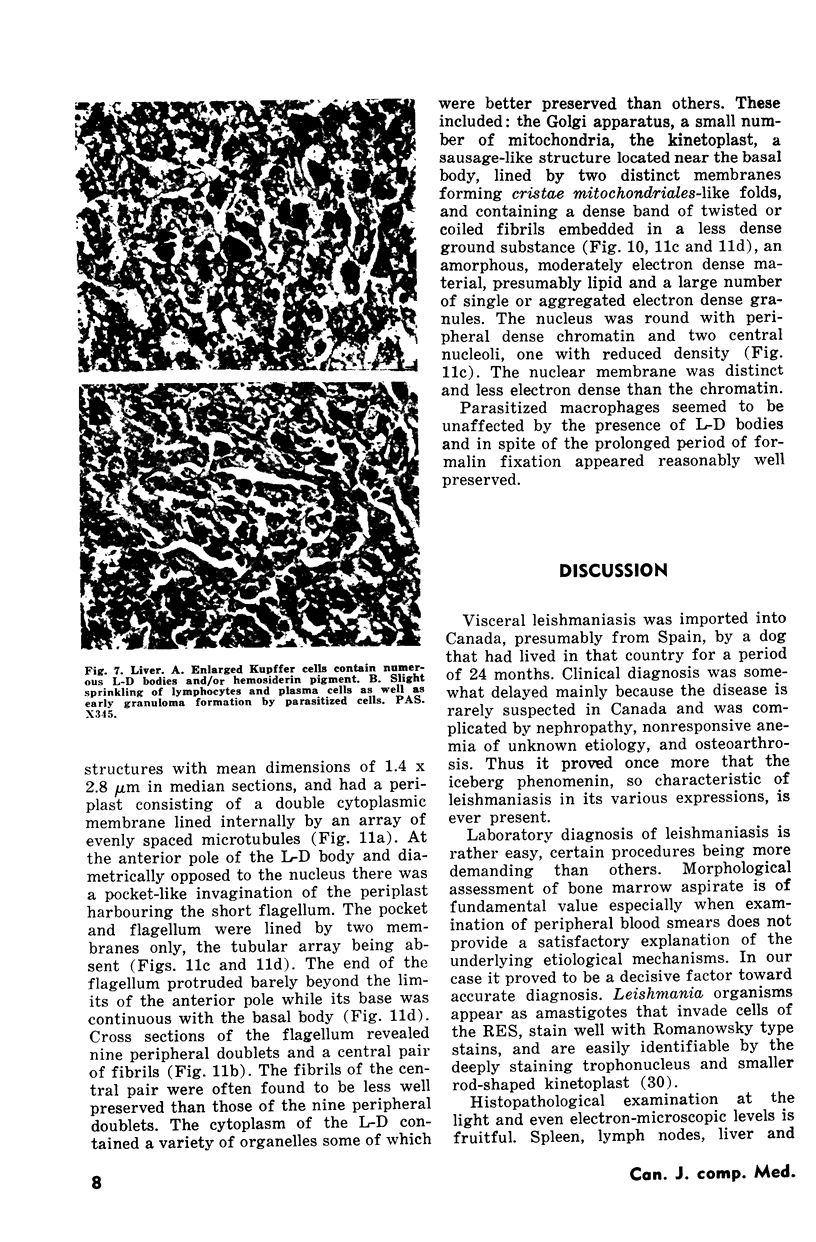
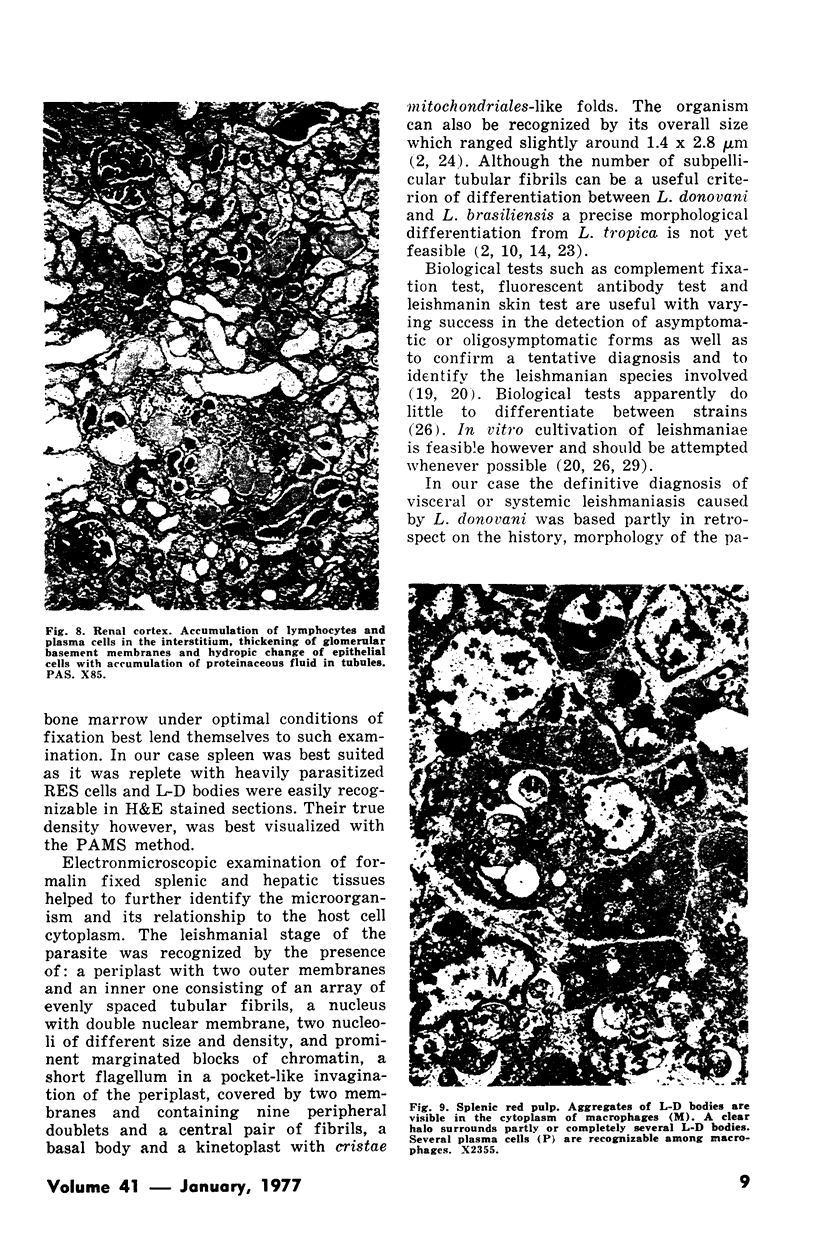
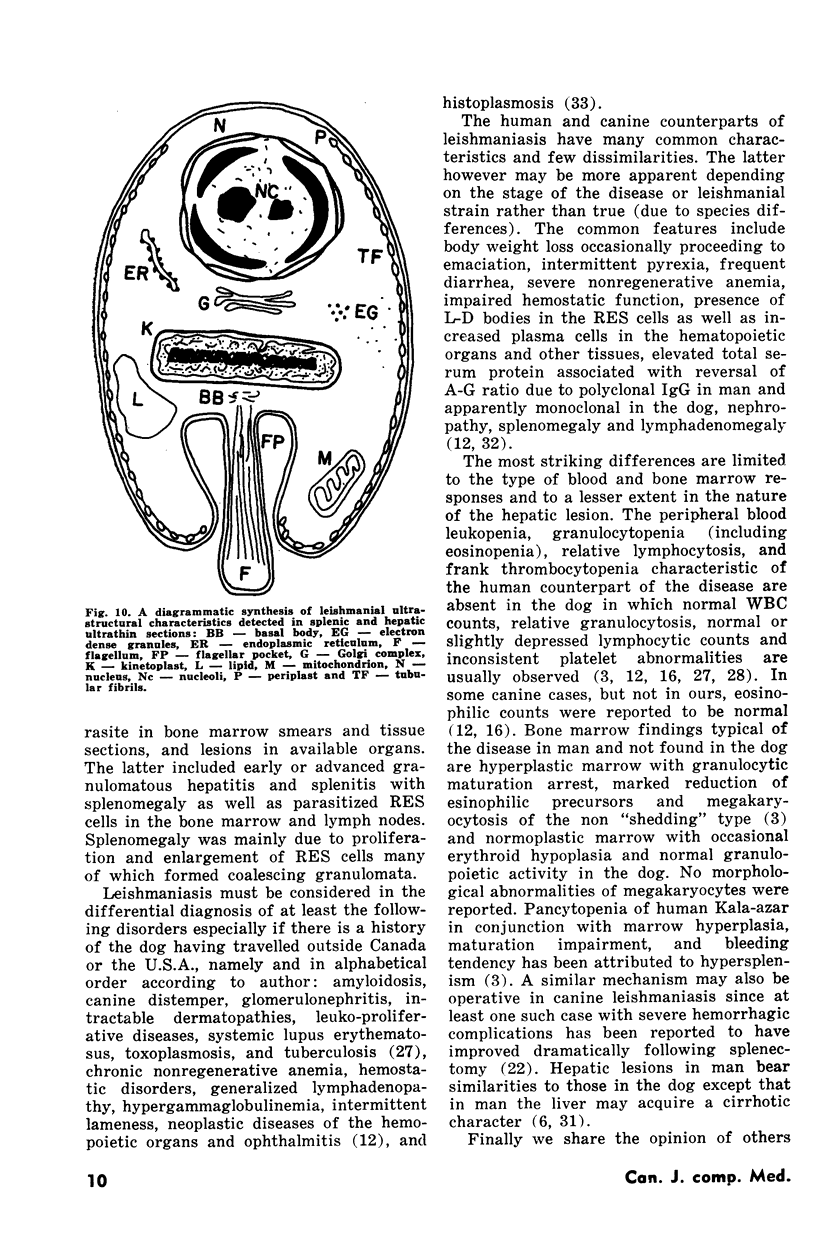
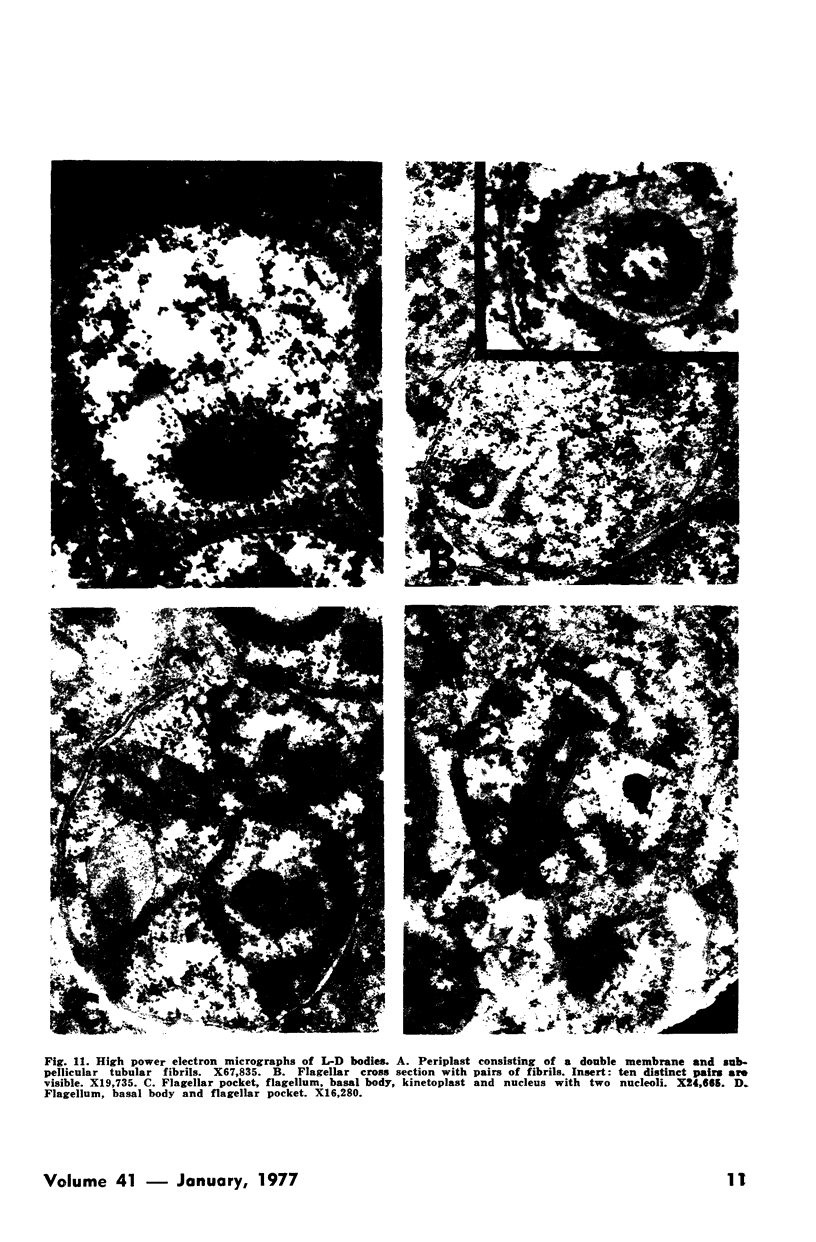
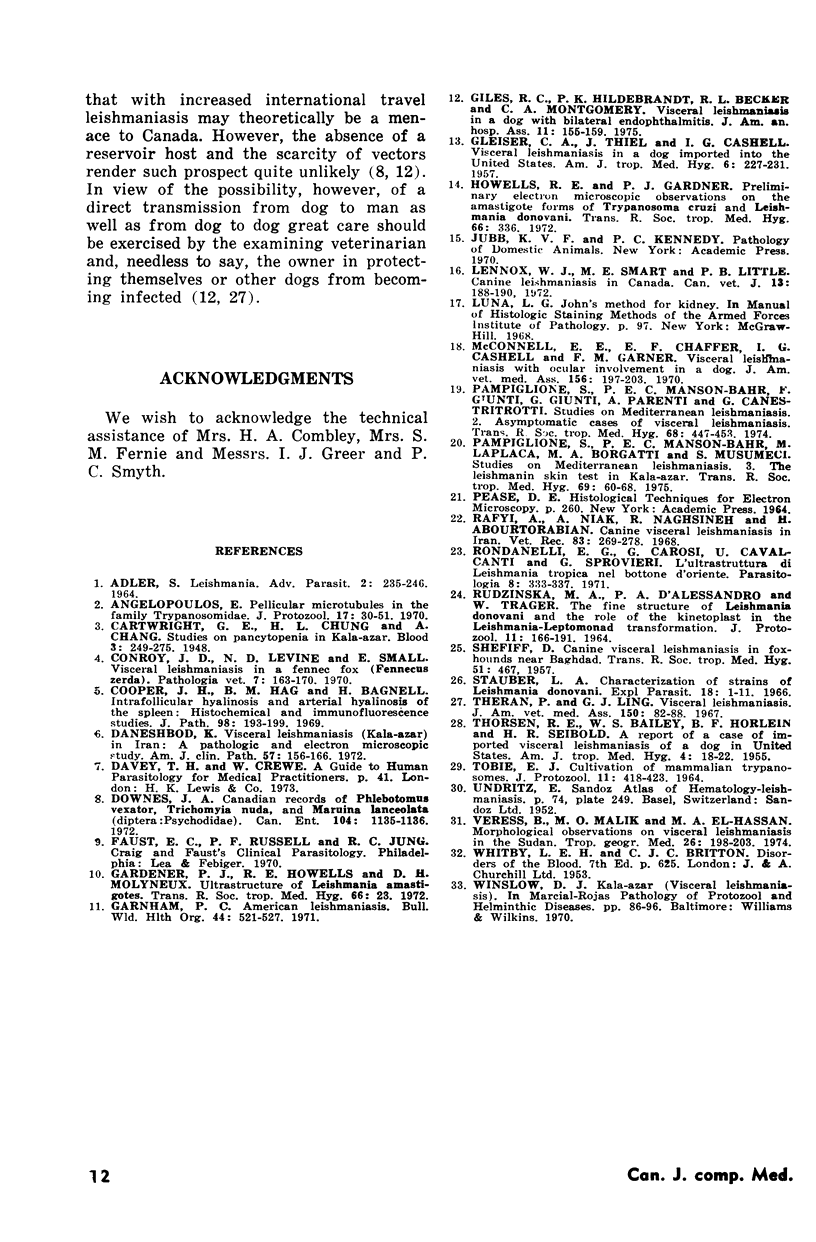
Images in this article
Selected References
These references are in PubMed. This may not be the complete list of references from this article.
- Angelopoulos E. Pellicular microtubules in the family Trypanosomatidae. J Protozool. 1970 Feb;17(1):39–51. doi: 10.1111/j.1550-7408.1970.tb05157.x. [DOI] [PubMed] [Google Scholar]
- Conroy J. D., Levine N. D., Small E. Visceral leishmaniosis in a fennec fox (Fennecus zerda). Pathol Vet. 1970;7(2):163–170. doi: 10.1177/030098587000700210. [DOI] [PubMed] [Google Scholar]
- Cooper J. H., Haq B. M., Bagnell H. Intrafollicular hyalinosis and arterial hyalinosis of the spleen: histochemical and immunofluorescence studies. J Pathol. 1969 Jul;98(3):193–199. doi: 10.1002/path.1710980306. [DOI] [PubMed] [Google Scholar]
- Daneshbod K. Visceral leishmaniasis (kala-azar) in Iran: a pathologic and electron microscopic study. Am J Clin Pathol. 1972 Feb;57(2):156–166. doi: 10.1093/ajcp/57.2.156. [DOI] [PubMed] [Google Scholar]
- GLEISER C. A., THIEL J., CASHELL I. G. Visceral leishmaniasis in a dog imported into the United States. Am J Trop Med Hyg. 1957 Mar;6(2):227–231. doi: 10.4269/ajtmh.1957.6.227. [DOI] [PubMed] [Google Scholar]
- Garnham P. C. American leishmaniasis. Bull World Health Organ. 1971;44(4):521–527. [PMC free article] [PubMed] [Google Scholar]
- Howells R. E., Gardener P. J. Preliminary electron microscope observations on the amastigote forms of Trypanosoma cruzi and Leishmania donovani. Trans R Soc Trop Med Hyg. 1972;66(2):336–336. doi: 10.1016/0035-9203(72)90214-3. [DOI] [PubMed] [Google Scholar]
- Lennox W. J., Smart M. E., Little P. B. Canine leishmaniasis in Canada. Can Vet J. 1972 Aug;13(8):188–190. [PMC free article] [PubMed] [Google Scholar]
- McConnell E. E., Chaffee E. F., Cashell I. G., Garner F. M. Visceral leishmaniasis with ocular involvement in a dog. J Am Vet Med Assoc. 1970 Jan 15;156(2):197–203. [PubMed] [Google Scholar]
- Pampiglione S., Manson-Bahr P. E., Giungi F., Giunti G., Parenti A., Canestri Trotti G. Studies on Mediterranean leishmaniasis. 2. Asymptomatic cases of visceral leishmaniasis. Trans R Soc Trop Med Hyg. 1974;68(6):447–453. doi: 10.1016/0035-9203(74)90067-4. [DOI] [PubMed] [Google Scholar]
- Pampiglione S., Manson-Bahr P. E., La Placa M., Borgatti M. A., Musumeci S. Studies in Mediterranean leishmaniasis. 3. The leishmanin skin test in kala-azar. Trans R Soc Trop Med Hyg. 1975;69(1):60–68. doi: 10.1016/0035-9203(75)90012-7. [DOI] [PubMed] [Google Scholar]
- RUDZINSKA M. A., D ALESANDRO P. A., TRAGER W. THE FINE STRUCTURE OF LEISHMANIA DONOVANI AND THE ROLE OF THE KINETOPLAST IN THE LEISHMANI-LEPTOMONAD TRANSFORMATION. J Protozool. 1964 May;11:166–191. doi: 10.1111/j.1550-7408.1964.tb01739.x. [DOI] [PubMed] [Google Scholar]
- Rafyi A., Niak A., Naghshineh R., Aboutorabian H. Canine visceral leishmaniasis in Iran. Vet Rec. 1968 Sep 14;83(11):269–271. doi: 10.1136/vr.83.11.269. [DOI] [PubMed] [Google Scholar]
- Stauber L. A. Characterization of strains of Leishmania donovani. Exp Parasitol. 1966 Feb;18(1):1–11. doi: 10.1016/0014-4894(66)90002-6. [DOI] [PubMed] [Google Scholar]
- THORSON R. E., BAILEY W. S., HOERLEIN B. F., SEIBOLD H. R. A report of a case of imported visceral leishmaniasis of a dog in the United States. Am J Trop Med Hyg. 1955 Jan;4(1):18–22. doi: 10.4269/ajtmh.1955.4.18. [DOI] [PubMed] [Google Scholar]
- TOBIE E. J. CULTIVATION OF MAMMALIAN TRYPANOSOMES. J Protozool. 1964 Aug;11:418–423. doi: 10.1111/j.1550-7408.1964.tb01773.x. [DOI] [PubMed] [Google Scholar]
- Veress B., Malik M. O., Satir A. A., el Hassan A. M. Morphological observations on visceral leishmaniasis in the Sudan. Trop Geogr Med. 1974 Jun;26(2):198–203. [PubMed] [Google Scholar]



